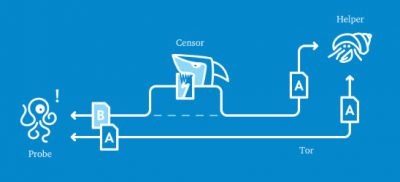

We define such adversaries as those with the ability to monitor both network traffic that enters and exits the network. It is well understood that low-latency anonymity networks such as Tor cannot protect against so-called global passive adversaries. These limitations are not news to the research community.

While the use of Tor constitutes a significant privacy gain over off-the-shelf web browsers, it is no panacea, and the Tor Project is upfront about its limitations. The EFF maintains a great interactive diagram, illustrating information leakage in several scenarios. The website you visit (e.g., Facebook) will also know that you are using Tor, but it will not learn your IP address. When using Tor, your ISP can no longer learn what websites you visit, but it does know that you are using Tor. Tor works by decoupling a user’s identity (i.e., the IP address, which reveals where in the world you are) from her activity (e.g., visiting Facebook). By using Tor Browser, users can protect their web browsing from government surveillance, stalkers, advertisement-injecting ISPs, and nosy neighbors. The Tor Project is maintaining a privacy-enhanced version of the popular Firefox web browser- Tor Browser-that bounces its network traffic over the Tor network. Roberts, and Nick Feamster.Ĭounting almost two million daily users and 7,000 relays, the Tor network is the largest anonymity network operating today. This blog post is joint work with Benjamin Greschbach, Tobias Pulls, Laura M.


 0 kommentar(er)
0 kommentar(er)
